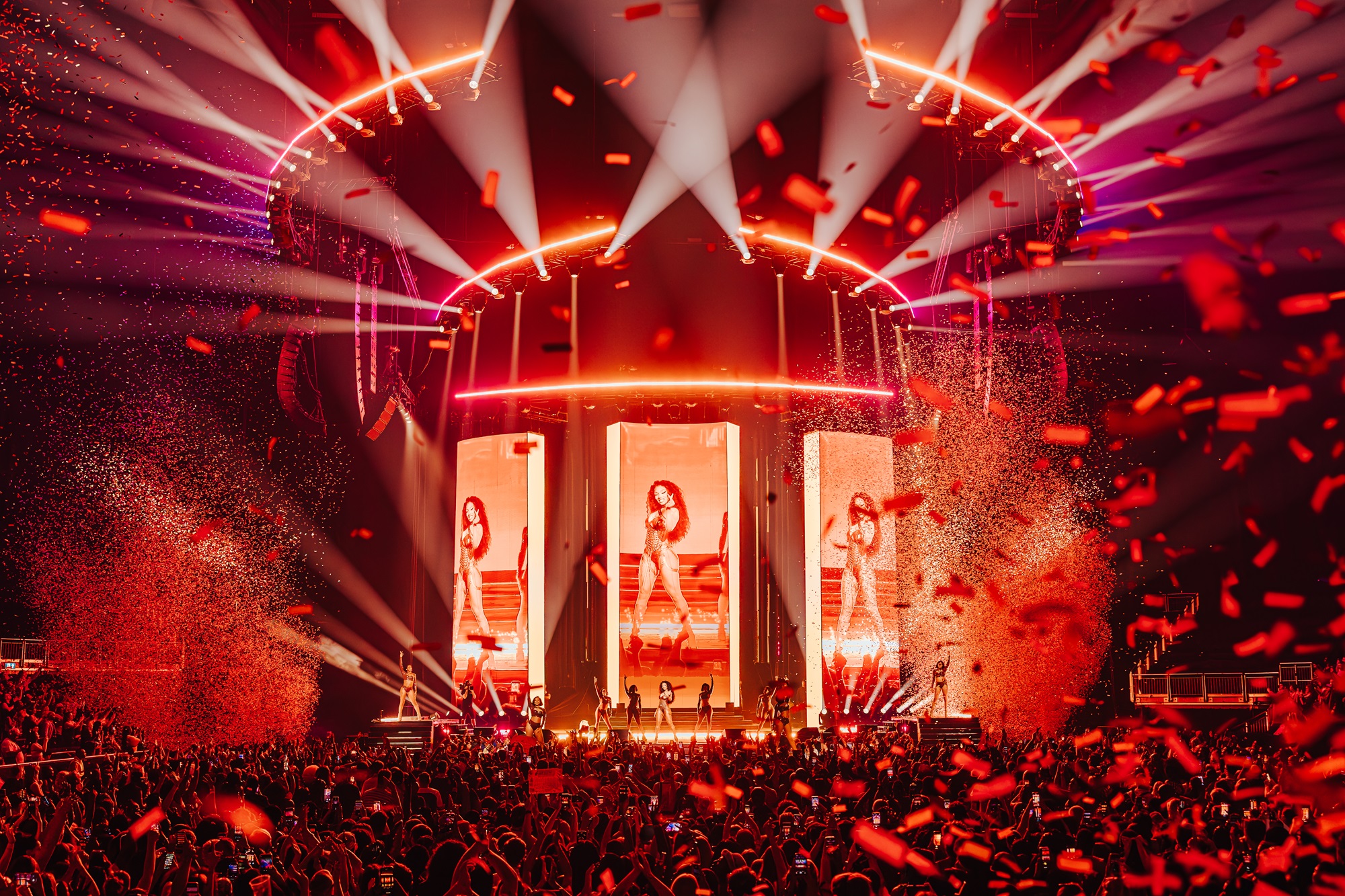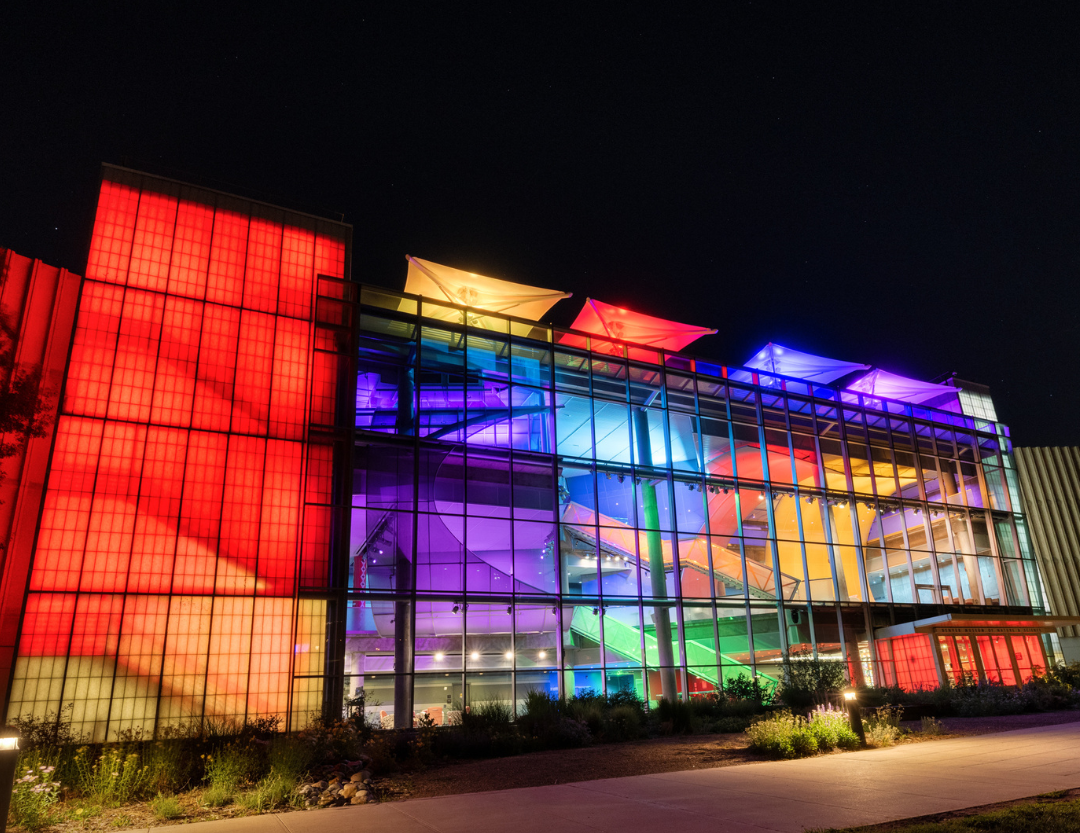NEW YORK – The Brooklyn Academy of Music (BAM) wanted to offer film screenings during the “dark” months of summer for its 831-seat Harvey Theater. However, the venue, designed for live performances, required technical revisions to accommodate a high-quality cinema experience for BAM’s patrons. Auerbach Pollock Friedlander worked with BAM and Mitchell/Giurgola Architects to realize BAM’s vision by providing theatre and AV consulting for digital cinema projection and also for new seating.
More details from Auerbach Pollock Friedlander (www.auerbachconsultants.com):
“BAM wanted to show first-run 2-D and 3-D films on a single screen – as opposed to two screens which is typical for commercial cinema,” said Dan Mei, project manager for audio-video consulting. “The varied uses of the Harvey required the screen to be ’struck‘ and stored quickly but storing it in the stage-house was ruled out by BAM’s production requirements. So we designed a unique, and ultimately very successful, storage solution.
The new motorized screen is stored under the modular stage floor when not in use. For cinema events, it is rigged on a hanging truss that is flown with chain hoists. The whole changeover takes about two hours.”
The location of the cinema screen downstage of the fire curtain does not conflict with rigging and production work in the flytower, which can be done without having to fully strike the screen. Removable screen channel loudspeakers and subwoofers are rigged behind the screen. Cinema surround sound is provided by fixed loudspeakers mounted to the rear and side walls of the theatre.
“Inserting a Digital Cinema System into a historic theatre that continues to be used primarily for live performance presented a variety of challenges, one of which was the location of the projector. Several options were studied during the process, and when the angle from the rear of the upper balcony was determined to be unacceptable, we designed a small projection on the main floor that was finished to match the distressed look of the theatre,” explained Steven Friedlander, principal in charge.
While the Harvey Theatre’s existing acoustics are excellent for live theatrical and music performances, creating a proper acoustical environment for highly-amplified sound associated with today’s Hollywood releases required acoustic absorption in the room. A series of motorized adjustable acoustic banners were designed in conjunction with the project accoustician, Akustiks. The acoustic banners allow the overall reverberation time of the theatre to be reduced which, in turn, increases intelligibility of the film’s dialog track. The banners can be controlled individually or in groups to adjust the absorption as needed for each given presentation.
In 2010, Auerbach Pollock Friedlander worked closely with BAM’s senior staff, the board of trustees and the architects to develop a new plan to replace the seating. The seating project first began with BAM’s desire to replace the old seats, some of which were broken and uncomfortable. Later, after a review of the audience circulation paths and a survey of ADA compliance, the scope of the project grew.
Now, the front section of orchestra seating and the entire stage floor have been replaced with modular platforms. Custom seats were designed to match the original seating from the 1987 renovation. “Reseating” of the balcony has already begun in the second phase of the project.
“The design concept for the entire project was to remain true to the first renovation in 1987,” said Don Guyton, project manager for the seating project. “Part of the success of the project is that audience members do not know that most of the room was actually demolished and rebuilt – with seats that are comfortable and a theatre that is code compliant. When Peter Brook visited recently (for his production of The Suit), he was very pleased with the outcome. His approval was a great endorsement of the work.”
Since 2004, Auerbach Pollock Friedlander’s collaboration with BAM has been a true partnership. The firm’s other projects with BAM include several theatrical system upgrades to the Harvey Theater, the new Richard B. Fisher Building with two performance spaces, and technical upgrades to the Howard Gilman Opera House.


